The SteelSeries Arctis Pro Gaming Headset Lineup: GameDAC Or Wireless
by Brett Howse on March 13, 2018 9:00 AM EST- Posted in
- Headset
- Audio
- SteelSeries
- Accessories
- Arctis Pro
Arctis Pro Wireless
Since we’ve already gone over the wired model, there’s less to say with the wireless version, since it’s almost an identical design, but with wireless capabilities. From a design standpoint, it loses the RGB LED lighting that the wired model offers, to prolong the battery life. It adds buttons on the right speaker to turn on the set, and pair it with Bluetooth, and the right speaker cover is now a battery cover. Other than those changes, from a design standpoint, the Arctis Pro Wireless is identical to its wired model, with same speaker drivers with a 10 Hz to 40 Khz range, and the same ClearCast microphone. But, it has enough of its own features that it really brings its own take on the design.
While it’s the same externally, and carries the same drivers, the Wireless model doesn’t share the amazing DAC as the wired model, since the audio has to be transmitted to the headset digitally, so a DAC has to be built-in, and it’s not the ESS Sabre 9018.
SteelSeries offers plenty of choices for connection as well. The transmitter base station offers USB input, optical input and output, and 3.5 mm input and output. The headset itself also features the same proprietary cable connector as the Arctis Pro, and it ships with an adapter to 3.5 mm to you can connect directly to the headphones to avoid wireless altogether. You can also just connect a 3.5 mmm right to the headset if necessary. Finally, the headset also features a Bluetooth connection to pair with practically any mobile device. For Bluetooth, the Arctis Pro Wireless offers Bluetooth 4.1 with A2DP, HFP, and HSP profiles.
One of the coolest features is that you can listen to both the Bluetooth and the wireless audio at the same time, so you can stream your phone to your headset, use it to answer calls, and all the while be listening to audio from your PC or PS4.
If you’re on a PC, the best way to use the Arctis Pro Wireless is with the transmitter base station connected over USB. It, like the wired model, appears as two separate audio sinks in Windows, so you can mix your game and chat levels as necessary. The transmitter is 2.4 GHz, which might be an issue in some locations, but it’s lower latency than the Bluetooth connection. The transmitter also features an OLED display which can show the status of the batteries, volume, and more. The volume knob on the headset also is the same volume as the transmitter, unlike the wired model, and avoids any confusion. The transmitter is rated for up to 40 feet, and there was never any issue with range anywhere in the house.
One of the pain points I’ve had with wireless headphones is the battery, which is a tricky proposition. If you want long battery life, you generally need a very large battery, which adds mass to the headset. Then, when you’re done with your session, you need to either plug in the headset to power, or use a dedicated charging stand. That’s never been an elegant solution, and SteelSeries has decided to go with dual batteries instead, which works very well. The transmitter base station has a slot on the side to hold and charge one battery, while the other is in use. Then you just quickly swap them when it dies. It’s a solution that’s been used before by with the first use in gaming that I can recall is the Logitech G7 mouse, and it worked very well on that. On the SteelSeries headset, you just pop the magnetically attached right speaker cover off, and switch out the battery. After a couple of times, it only takes a few seconds.
You can also charge it directly using a micro USB connector on the bottom of the headset, in case you’re travelling and away from the base station.
The battery life has been pretty solid as well, and even at reasonable volume levels, it’s been very easy to get eight to ten hours out of the battery. The transmitter base station will display the battery level on the display, so you can quickly get an idea how much is left, but it would be nice to get a bit more warning as the battery is about to expire.
The headset also features a built-in equalizer, and much of the same functionality as the GameDAC unit itself. This makes it very portable, and no software is ever required to get the same audio quality anywhere you use the headset.
All wireless headsets have noise, which you’ll hear as a low-level hiss, and the Arctis Pro Wireless has this as well. It’s not distracting, but compared to the absolute silence of the wired model, it’s something you’ll notice.
Overall the wireless model fixes several of the pain points of wireless gaming headsets, which most notably is the battery charging, and the SteelSeries solution is fantastic. The functionality added to the transmitter including the EQ, chat mix, and more, really provides a lot more options for the owner than a typical headset would. It’s a great setup.


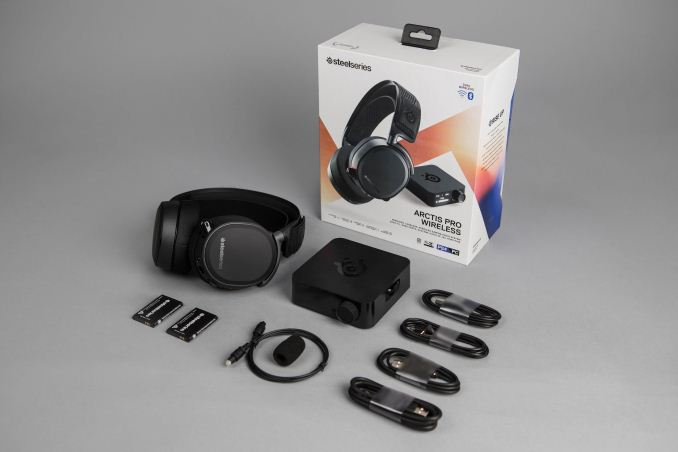
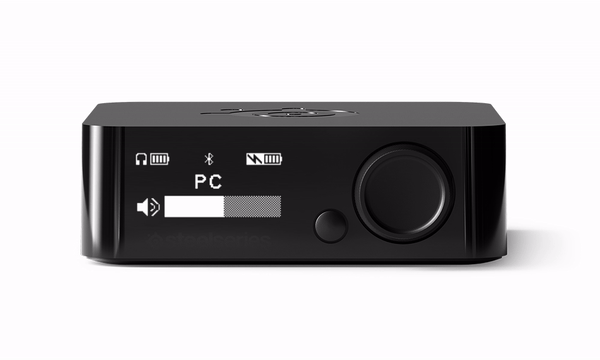
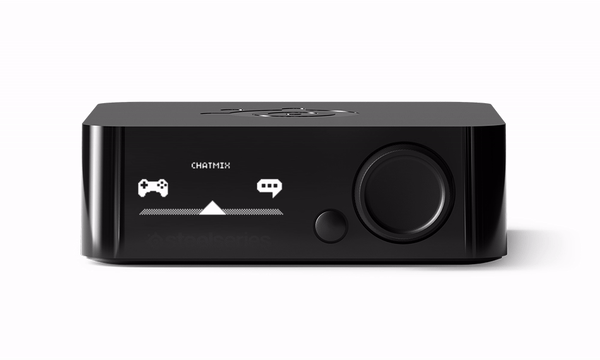
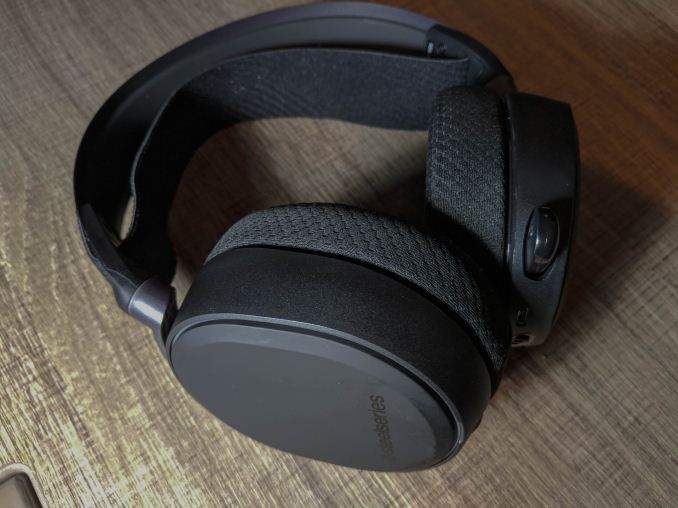
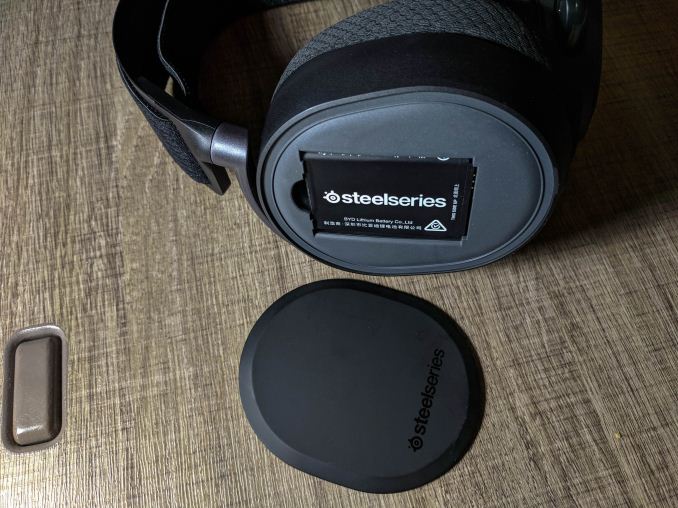








32 Comments
View All Comments
halcyon - Tuesday, March 13, 2018 - link
Sorry, but it totally reads like an advertisement. Just regurgitating basic marketing material.Real headphone reviews, read head-fi, innerfidelity, many other sites.
And the proof-reading:
"back design, when is amazing for isolation,"
Sure. I wonder if the writers get paid for just producing characters.
Dribble - Tuesday, March 13, 2018 - link
It's an advert imo. It sings the praises of a usb dac like its some sort of revelation, and not the way that most surround sound gaming headsets have been made for years.halcyon - Tuesday, March 13, 2018 - link
Also, the review states:" pretty easy to say that the Arctis Pro is one of the best gaming headsets on the market."
I doubt the reviewer has EVER tried even 1/10th of the gaming headsets on the market.
No, THIS is a proper Gaming Headset review:
https://pclab.pl/art77039-16.html
Samus - Tuesday, March 13, 2018 - link
The Steelseries Siberia is in an entirely different league than what Asus and Kingston make. Which is why the review you link too didn't even review the Siberia. For the last 4 years, the Steelseries H-series has been the benchmark to beat for gaming headphones and nobody has seemingly even tried to compete with them. Sure, the breakout boxes with OLED displays could be considered gimmicks, if they actually were gimmicks. But they are useful. Every feature in the package is useful.Brett Howse - Tuesday, March 13, 2018 - link
Not an advertisement. Of course other devices have DACs. Every audio device that hooks to a PC has a DAC.The THD+N on this GameDAC is fantastic. It has a quality amplifier built-in. It offers features that you'd not get with a normal headset.
It doesn't need ANY software installed on your PC to use it or configure it. Some companies have software that's required, and that also requires a login. And it updates every day and asks for a restart. This doesn't need any of that for the full functionality.
Not an advertisement. Just a good product.
Brett Howse - Tuesday, March 13, 2018 - link
So no, this isn't an advertisement. This is a new product, and we were able to try out the product and provide our experience with them.Originally this was going to be just a news piece for the launch, but SteelSeries got us the product several weeks ago which gave a chance to actually use them for more than the 5 minutes you'd see in a hands-on.
Just like any other product review I've done, I've used it, tested it, and provided explanations as to where I think the product excels, and where I think improvements should be made. We don't have all of the test equipment for full testing on headphones, but maybe that's something we'd look at doing in the future. Maybe not with the response this set of headphones received. If you look around, no one else even bothered to show the frequency response.
I've been looking for a set of headphones with almost all of what the Arctis Pro has to offer for some time. This lineup solves actual pain points I've had with other products. They are, in fact, very good.
Have I used every set of headphones ever? Of course not. But I've probably used several dozen.
I like quality audio. I'm not an audiophile, and I wouldn't want to be labeled as one, but if I'm looking for a set of headphones, I'd be looking for clarity, tight bass, and of course comfort, and this lineup offers all of that.
Not an advertisement. Just an experience with a product that lives up to what we were promised when discussing it with the company, and that's not always the case.
Kerdal - Tuesday, March 13, 2018 - link
Hi Brett, I was wondering something. Have you tried the Sennheiser Game One (open back) or the older PC360? I have a few of each but I'm always on the lookout for an upgrade.I'm wondering how these compare to the Sennheiser in terms of sound quality.
My motherboard is the ASUS ROG Maximus IX Code with the Sabre ES9023P and TI RC4850 amp so the gameDAC isn't all that necessary in my case.
Thanks in advance.
Brett Howse - Saturday, March 17, 2018 - link
My headset of choice is the Sennheiser HD 598 SR open back headphones. The Arctis lineup has an advantage over those though with offering better DACs so I don't have to worry about where I'm plugging in the Sennheisers.In terms of sound quality, compared to my HD 598 SRs, I would say the Arctis Pro is ahead, but the 598s are a bit more comfortable. I prefer open back though since it works better in my environment.
halcyon - Wednesday, March 14, 2018 - link
Brett, my advice, for what it is worth:1. Compare to something. Give a reference. Saying "The best" is useless, unless we know what your "best" earlier was.
2. Please try to do some semi-objective analysis of the different parts of what are the key points for a gaming headset: sound quality, sound fatigue during long term gaming sessions, wearing erconomics (headband tightness, crushing on ears, sweating), positional accuracy (using built-in 3D headphone virtualization AND/OR using the game's built-in like in Overwatch, again give us a comparison reference), microphone quality (it takes less than 5mins to fire up a recorder, record 15secs of speech, save it as 128kbps mp3, tag it into the review html).
Yes, we know you liked them, but you were mostly going ooh-aaah, about the "feature" that are basically marketing material.
We want to know how it performs. Compared to something else good.
That's why reviews are done, imho.
Brett Howse - Saturday, March 17, 2018 - link
This was going to be a first toe in the water for headphones, to get some more objective data for the future, but it might be the last.Your point 2 - I went over all those points except positional accuracy.